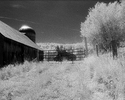drpsilver
Subscriber
08 Sept 2018
I have an interesting "problem". A friend was cleaning-out the darkroom of her father-in-law and gave me two boxes of stuff that she "just wanted to disappear". While sorting through these boxes I found 9 rolls of 120 Verichrome Pan, and 2 rolls of 616 Verichrome Pan. If this film had not been exposed, I would have used them for experiments, but all this film was exposed in 1968 and 1969. That make the latent images 50 years-old! I am curious as to see if there is any image left to develop-out, or has it faded. I have no idea how the film was stored over the past 50 years, and I have little interest in the images since that were not exposed by me, or my family. The rolls are labeled with topics ranging from "Eric's birthday party" to "Yosemite Valley". They were exposed by my friend's father-in-law with I do not know what camera.
So, my question is how do I go about developing these films with the highest probability of getting something printable? The developers I have at my disposal are: D-76, Perceptol, Dektol, and Rodinal (a little). I have consulted the "Massive Developing Chart" already, and have that data in hand. Any insight or suggestions on how to proceed would be appreciated.
Regards,
Darwin
I have an interesting "problem". A friend was cleaning-out the darkroom of her father-in-law and gave me two boxes of stuff that she "just wanted to disappear". While sorting through these boxes I found 9 rolls of 120 Verichrome Pan, and 2 rolls of 616 Verichrome Pan. If this film had not been exposed, I would have used them for experiments, but all this film was exposed in 1968 and 1969. That make the latent images 50 years-old! I am curious as to see if there is any image left to develop-out, or has it faded. I have no idea how the film was stored over the past 50 years, and I have little interest in the images since that were not exposed by me, or my family. The rolls are labeled with topics ranging from "Eric's birthday party" to "Yosemite Valley". They were exposed by my friend's father-in-law with I do not know what camera.
So, my question is how do I go about developing these films with the highest probability of getting something printable? The developers I have at my disposal are: D-76, Perceptol, Dektol, and Rodinal (a little). I have consulted the "Massive Developing Chart" already, and have that data in hand. Any insight or suggestions on how to proceed would be appreciated.
Regards,
Darwin






 Found FIlm - FILCA 5
Found FIlm - FILCA 5 Found FIlm - FILCA 1
Found FIlm - FILCA 1

